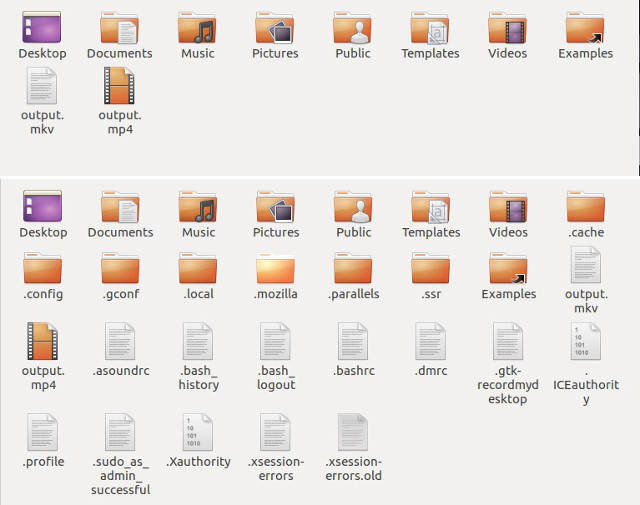
If you see inaccuracies in our content, please report the mistake via this form. shows all files in the directory, including the ones that start with. If we have made an error or published misleading information, we will correct or clarify the article. To show all the hidden files on your system, run find with the name option. To show the hidden files in Ubuntu, use the command ls -a command or the other options of the ls command. Our editors thoroughly review and fact-check every article to ensure that our content meets the highest standards. Another powerful way to find hidden files on your entire system is to use the find command with a globbing character. Our goal is to deliver the most accurate information and the most knowledgeable advice possible in order to help you make smarter buying decisions on tech gear and a wide array of products and services. ZDNET's editorial team writes on behalf of you, our reader. Indeed, we follow strict guidelines that ensure our editorial content is never influenced by advertisers. Neither ZDNET nor the author are compensated for these independent reviews. If you’re running an older or different version, it may not work. Note: Ctrl+h works in newer Ubuntu and CentOS environments. If Ctrl+h doesn’t work, click the View menu, then check the box to Show hidden files. For newer versions, the image displayed below works. First, browse to the directory you want to view. virtualenvs Now assuming you get a return of /home/.
Show hidden files terminal ubuntu full#
ls -F gives a full listing, indicating what type files are by putting. The accepted answer is correct for older versions of Ubuntu. 1 Answer Sorted by: 7 Before we start lets locate the folder: realpath virtualenvs realpath. You can also pass more than one directory to ls, and have them listed one after the other. Using ls on Different Directories To have ls list the files in a directory other than the current directory, pass the path to the directory to ls on the command line. This helps support our work, but does not affect what we cover or how, and it does not affect the price you pay. ls -a will list all files including hidden files (files with names beginning with a dot). In Linux operating systems (Debian, Ubuntu, Centos etc) hidden files are mostly created by the operating system. ls -1 We’ll discuss that weird-looking filename at the top of the listing in a minute. When you click through from our site to a retailer and buy a product or service, we may earn affiliate commissions. And we pore over customer reviews to find out what matters to real people who already own and use the products and services we’re assessing. This can be done by opening the File Manager then using the Ctrl+H keyboard shortcut in Ubuntu. We gather data from the best available sources, including vendor and retailer listings as well as other relevant and independent reviews sites. This post has demonstrated the possible methods to show hidden files in Ubuntu.ZDNET's recommendations are based on many hours of testing, research, and comparison shopping. The user can also see the hidden files using the shortcut key “ CTRL + H” or the “ Hamburger icon” from the top menu bar. For example, the -a option will show all files and folders, including hidden ones. To show the hidden files in Ubuntu, use the command “ ls -a” command or the other options of the “ ls” command. The ls command has many options that, when passed, affect the output. When the “ Show Hidden Files” option is checked, the hidden files will show up permanently in the directory as shown below: Clicking the icon will show a drop-down list ensure the “ Show Hidden Files” option is checked.


Using the File ManagerĪnother way to unhide the hidden files in Ubuntu is using the “ Hamburger icon” from the top menu toolbar of the directory. Note: The “ Ctrl+H” shortcut key is used to show/hide files. If you are unable to reveal a hidden file using its Properties in Windows, use the Attrib command to reveal the file. To do so, navigate to the directory where you want to search for the hidden files and press “ CTRL+H”:īefore Using the shortcut key, the files are hidden:Īfter using the shortcut key, it is observed that the hidden files are displayed: Your file browser will now, and always, display the hidden contents available to you from now on. From the menu that opens, check the Show Hidden Files option. We can show the hidden files in a directory by pressing the “ CTRL + H” shortcut key. Click on the Options button indicated by three lines, from the top bar in the File Manager. Let’s start with the first one: Using Shortcut Key There are two ways to show hidden files via GUI that are listed below and are explained as well: The GUI of Ubuntu can also be utilized to show hidden files.


 0 kommentar(er)
0 kommentar(er)
